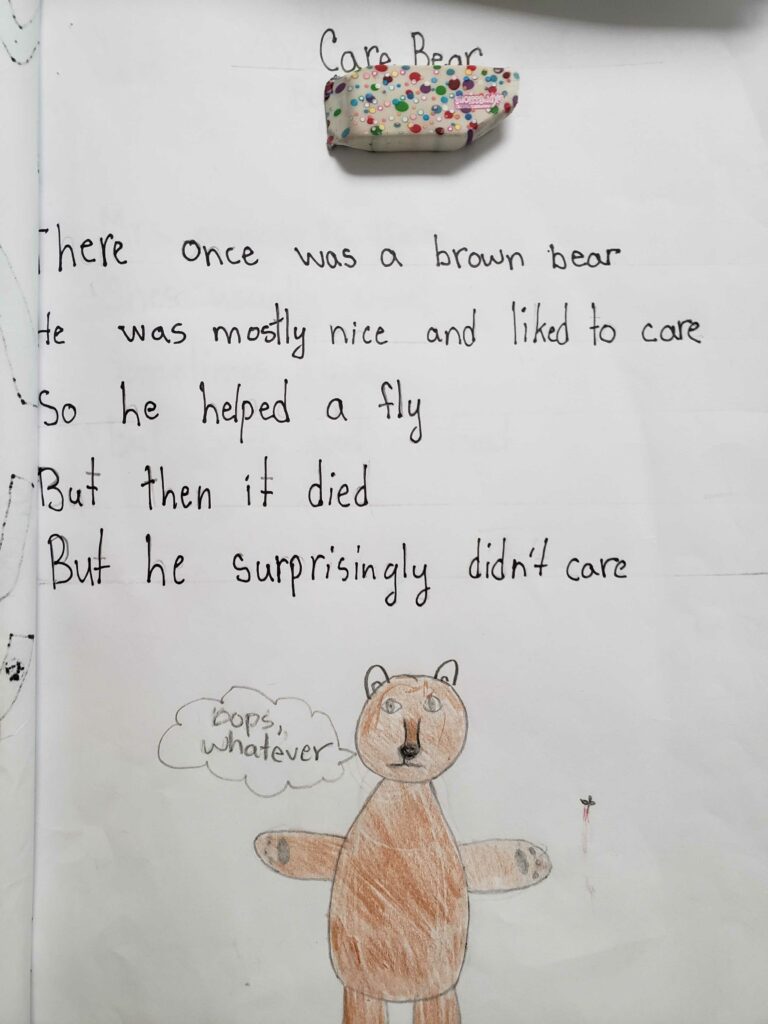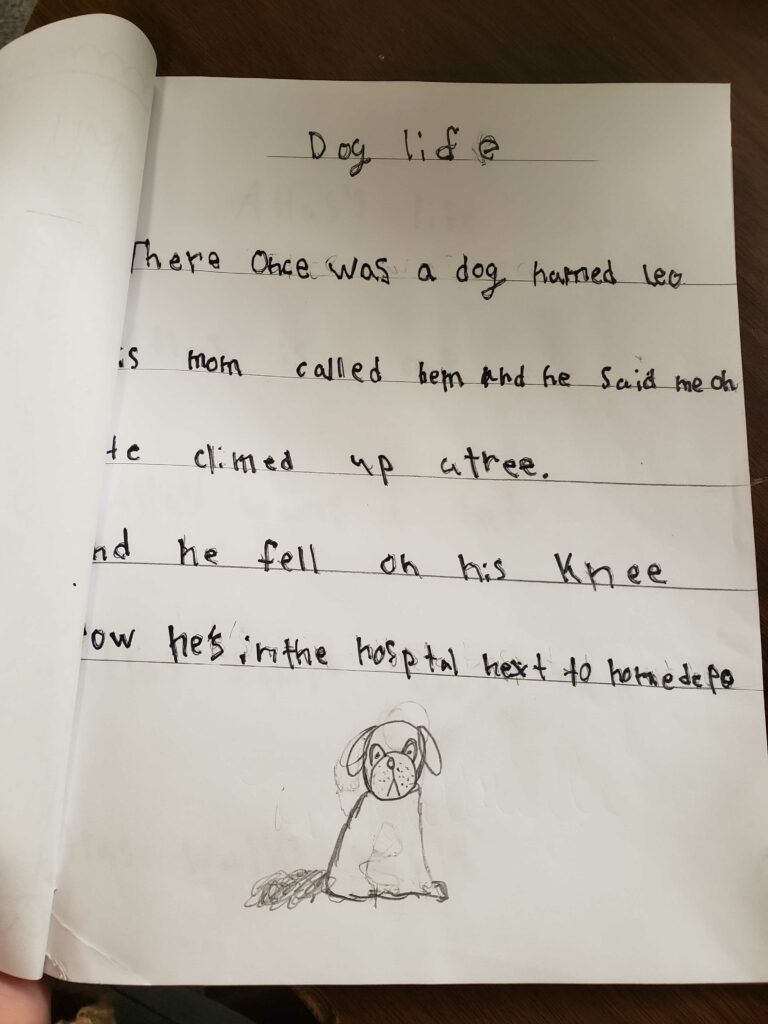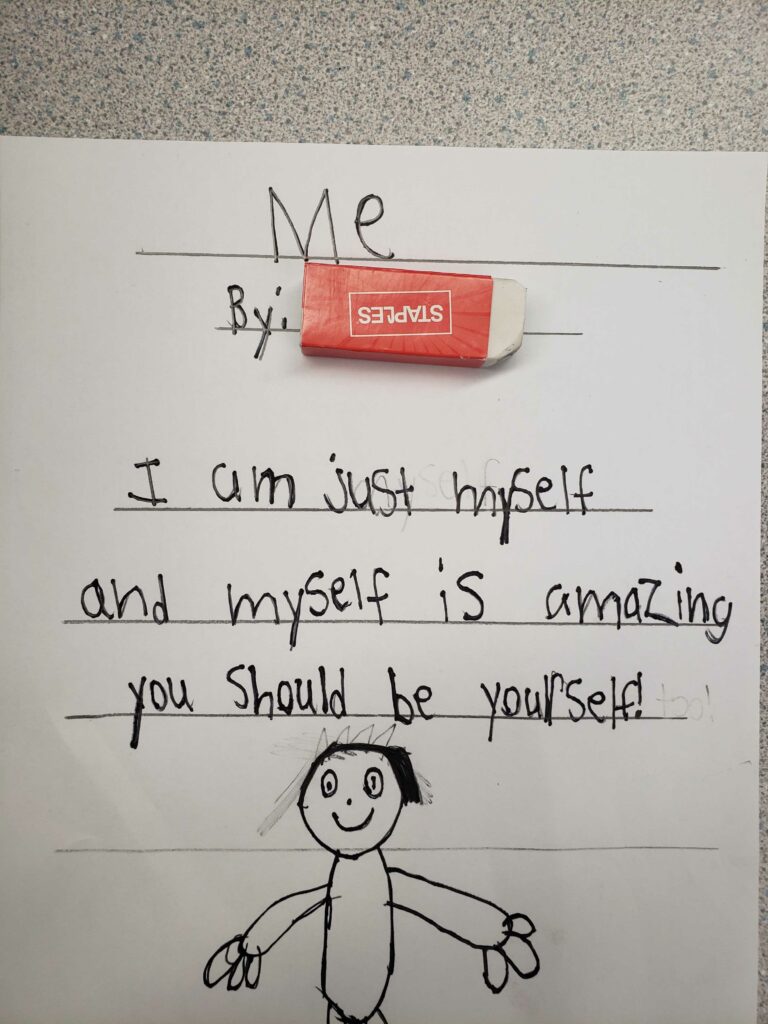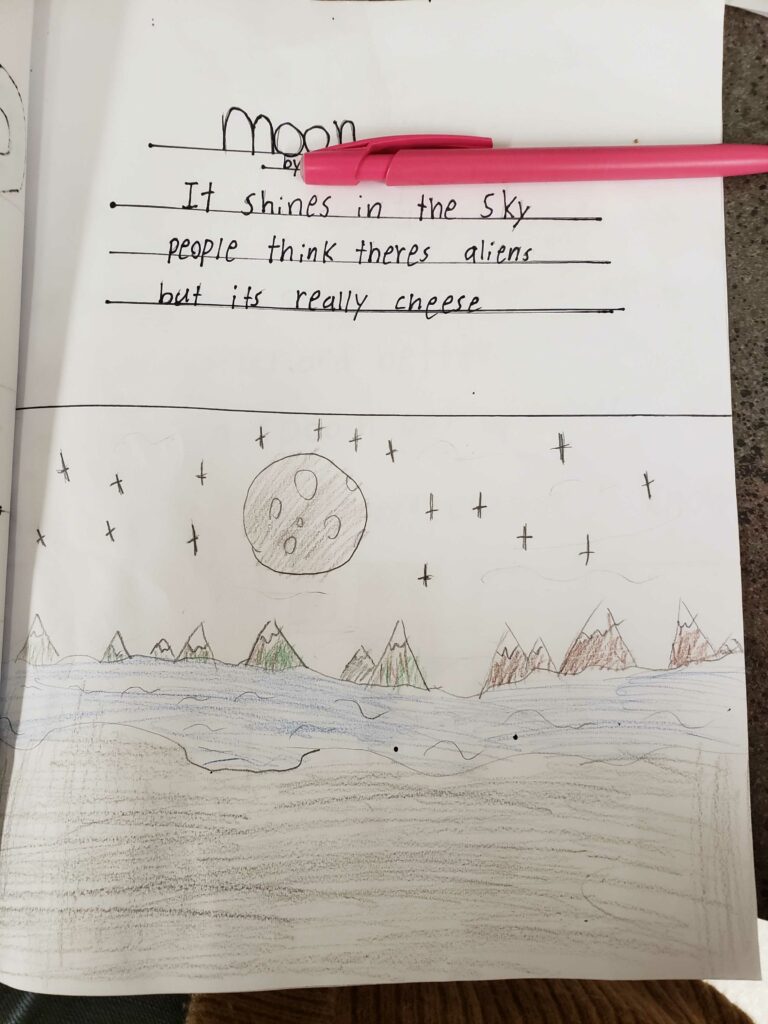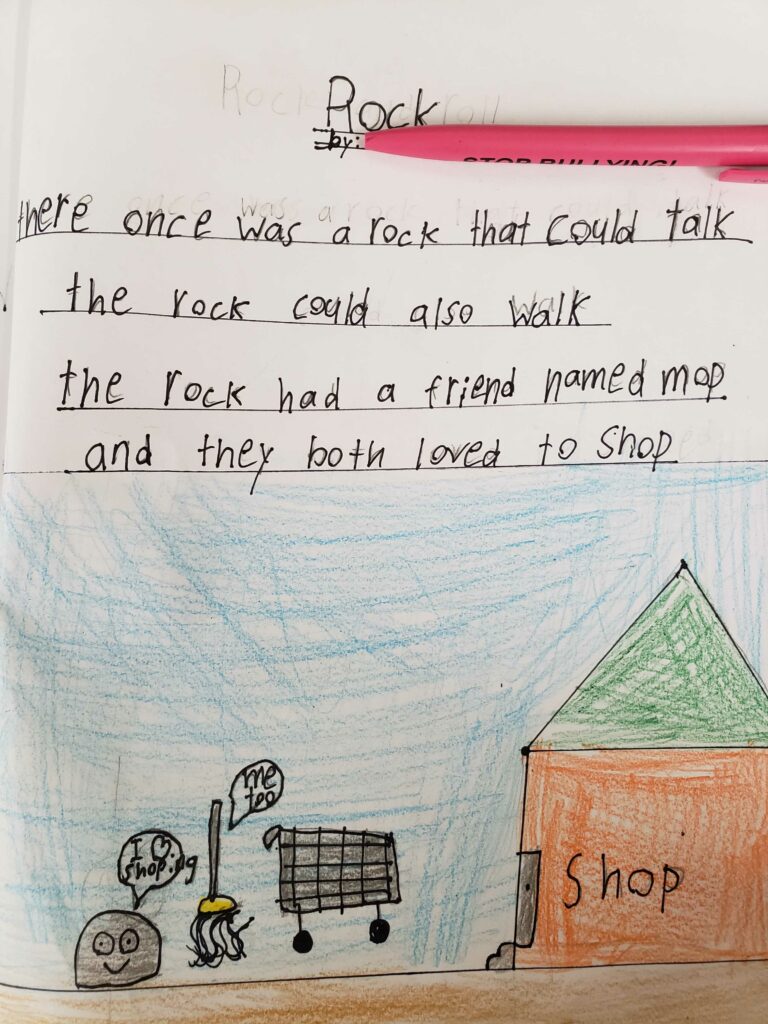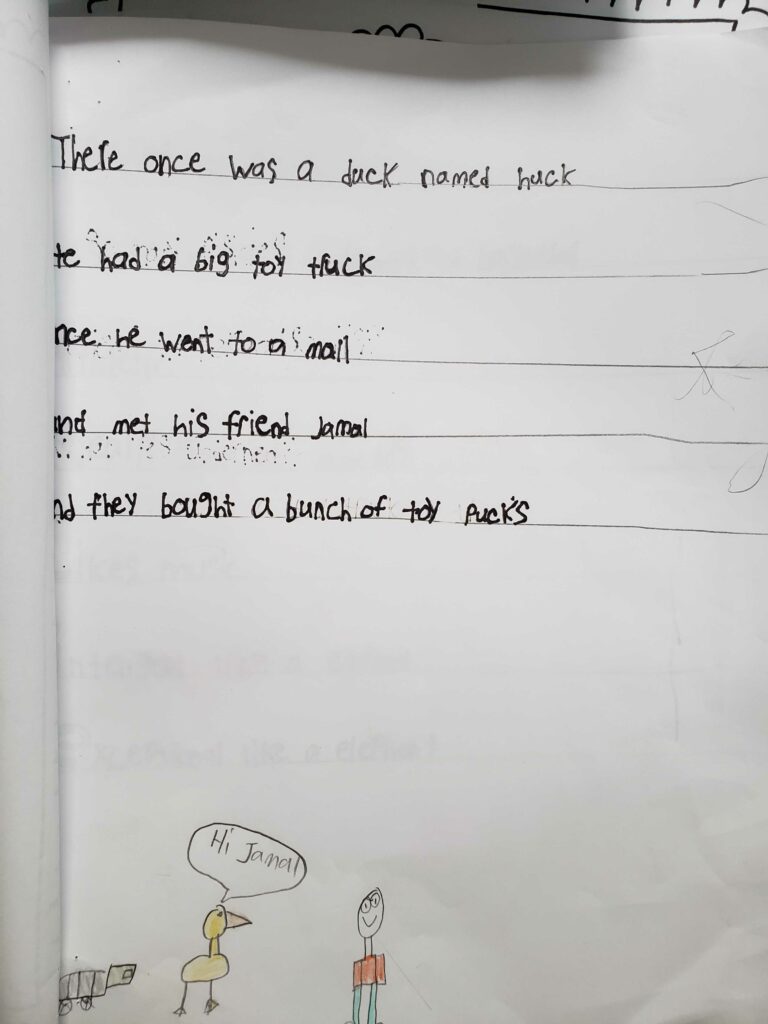During my 490 Practicum, I completed a poetry unit with my students. We begun with a week of diving into figurative language (similes, metaphors, alliteration, onomatopoeia, hyperbole, idiom, and personification), where we discussed different types of figurative language, picked out which were real examples of each type, created our own examples, and found examples in Katy Perry’s Firework (spoiler: there are a lot). We wrapped up this part of the unit with time spent in the forest creating figurative language examples based on our observations. One kid found a decaying bird, which ended up featuring in a lot of figurative language sentences.
We then moved on to poetry.
From my personal experience learning and writing poetry in elementary and high school, I knew that this unit could either go really well, or could have no one wanting to write poetry and hating the subject in general (Most of my own experience, unfortunately, fell into the latter category). So I went into my planning for this unit trying to make my lessons fun and engaging. Since this was these students’ first introduction to poetry, I really didn’t want to put them off of it from the beginning.
We started with quatrains: a simple, four line poem with a broad range of possible rhyme schemes. I chose this as a starter because, with this basic format and broad range of creations, it’s really hard to mess up a quatrain (unless, I guess, if you write more than four lines, but I made sure they knew that the main point of the poem was to give it four lines in hopes of minimizing this potential error).
For the actual lesson, I tried to keep it simple. I had a single page handout that contained a very brief explanation on what today’s poem was (for quatrains: four lines, some sort of rhyme scheme, this is how you figure out a rhyme scheme) and then a variety of examples. I also wrote an example on the whiteboard. Since Language Arts was right after recess, this gave students a chance to read the poem while they washed their hands and try to figure out what characteristics might make it that kind of poem over another kind. We then went through these characteristics as a class, and discussed what the rhyme scheme of the poem on the board or some of the other examples on the handout might be, or, in poems where it was relevant, the number of syllables in each line.
The next step was writing a poem. For quatrain, I had a student choose a rhyme scheme (AAAA was chosen) and then picked random students to give me a line that fit that rhyme scheme, emphasizing the idea that, while poems could be silly, the lines should at least go together. Our class written poem that day ended up being:
Pink Panther was a cat.
Pink Panther had a hat.
Pink Panther ate a rat.
Now Pink Panther feels fat.
A fairly simple poem, but it got the point across to the class. Some days it only took one class-written poem for the students to be ready to move on, some days we had to write two or three before they were feeling confident enough to move on. I was flexible because the goal wasn’t to write one poem as a class, but to make sure the students understood the parameters of a specific poem and how to write it.
Following the writing as a class session, students were given time to work on their own poetry. I gave them the goal of writing two different poems that day. If they wrote more, awesome. If they only wrote one, great. But they usually had upwards of 30 minutes, so I figured two was a reasonable goal.
We followed this pattern for a week: quatrain, followed by limerick, followed by acrostic, and wrapped up with haiku.
Our class-made acrostic poem was pretty great so I’ll share it here:
Make people mad
Astronomically annoying and hot
Soggy, stinky, stuffy, sucky
Keeps covid away
Stay safe!
Our next week was spent having time choosing their favourite of each type of poem and creating a good copy for their poetry books. Some students had already started working on their good copies if they finished creating their poems early, but most were starting fresh this week. This also gave students time to catch up if they’d missed learning about any types of poetry.
I’ll share some examples of some stellar poems below, but each student was able to create their poetry book with their favourite poems (written neatly, fine lined, and with a related picture). All their poems were unique and creative and really great for a first attempt at poetry.
On the work days, I’d shown them videos of people reading poetry, and had discussed the differences between, say, someone doing slam poetry and someone else reading a silly children’s poem. We talked about tone and infliction and how to make your poetry sound interesting.
Which led to our last day, where we held a poetry reading. Students were encouraged to read their favourite poem they’d written to the class, and were assured they’d have a chance later to read more of their poems if they wanted after everyone had had a chance to read their first one. Almost all of the class was eager to read their poems, and a lot of them utilized changing their tone and emphasis and voice to make their poetry sound cool.
There were only a couple of students who didn’t completely buy into the unit. For the most part, everyone was really engaged with creating their poems and their rhymes and counting their syllables. During their writing time, there was always a lot of “Ms. Murray, come look at what I wrote!” or “Can I read this to the class?” I would definitely use this unit plan again in teaching poetry in the future, as I think it gave these students a positive introduction to writing and reading poetry that will set them off on the right foot for future poetry lessons.
